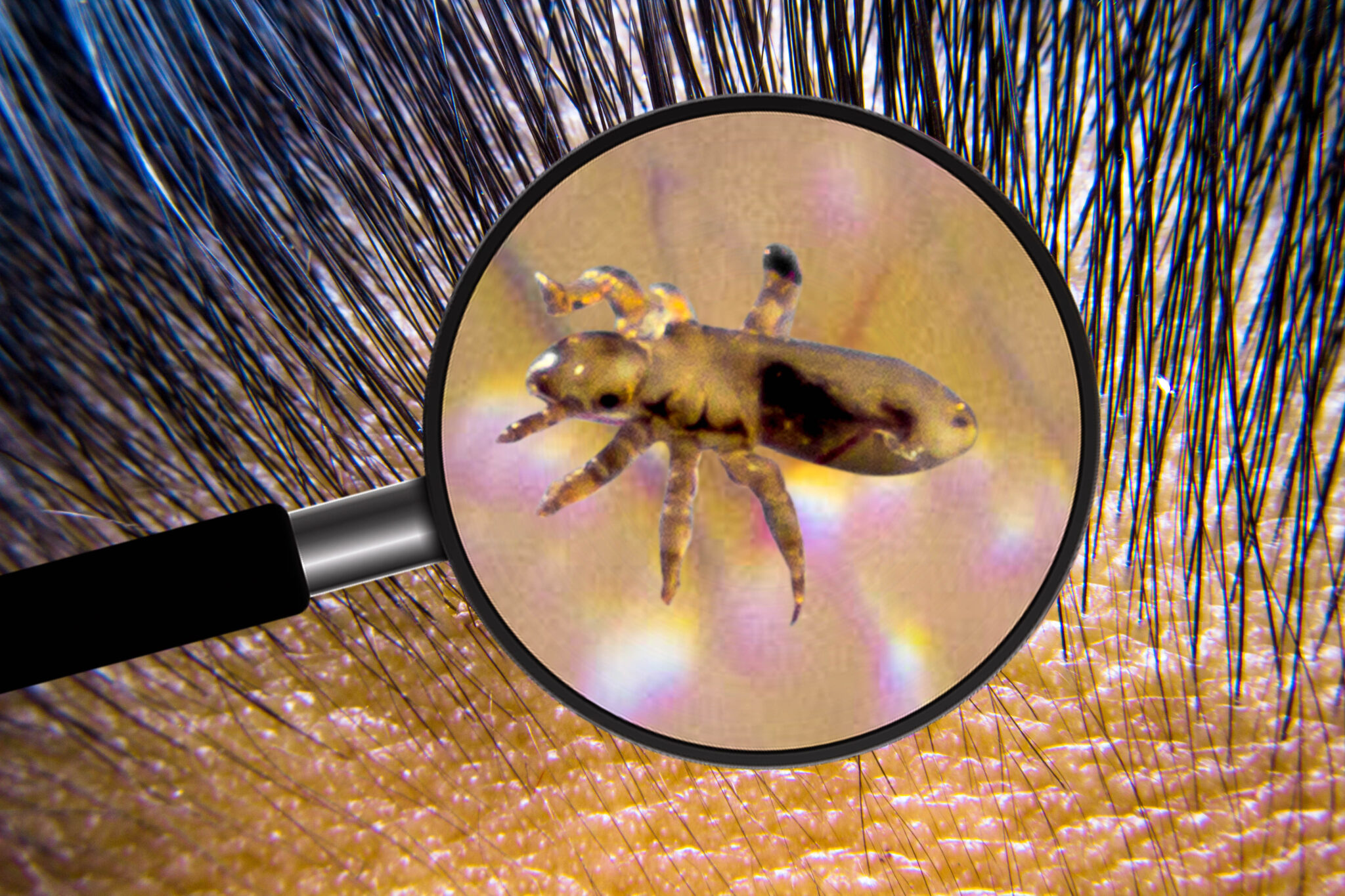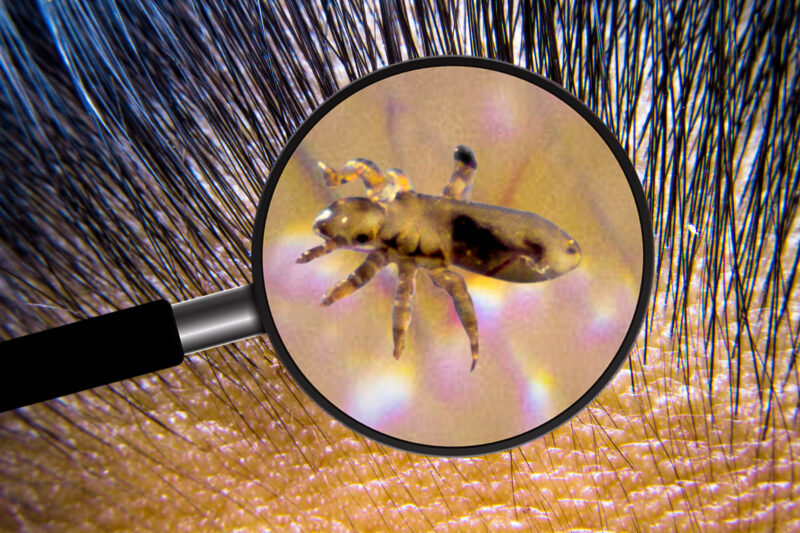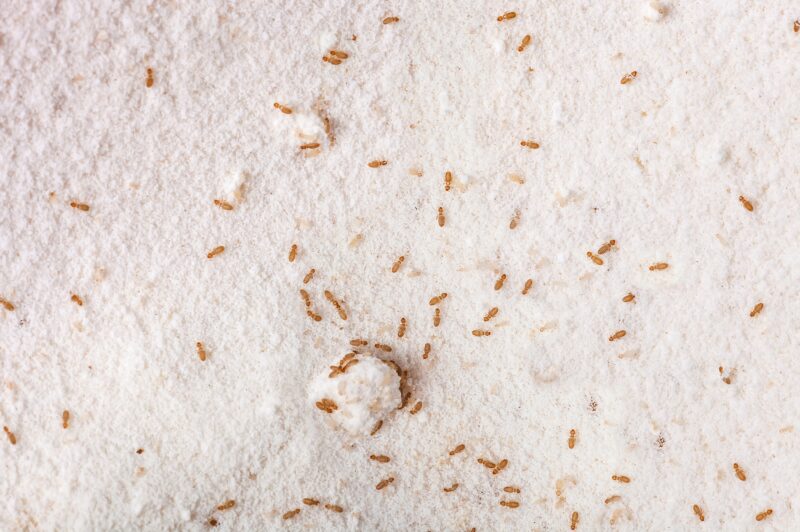Lice
Lice love to be warm, so they’re attracted to the heat from the Australian sun. However, they often infest people’s hair to feed on the blood of the host. Primarily, lice are a human health problem, and lice pest control isn’t typically a consideration here. Usually, we recommend that affected people seek help from a chemist or GP.
However, your home could be affected by psocids or booklice. These pests often infest poorly ventilated areas. Therefore, our experts will typically identify the lice type you have and recommend that you make modifications to the environment to solve the problem.
Generally, our company will offer tips to help protect yourself from an infestation. For example, it’s often wise to wash the bed linens more frequently and avoid wearing other people’s hats.
Sometimes, homeowners and business owners think that the white bugs they see are lice when they are termites. This is an entirely different species, and you can learn more about these pests by clicking here.
Flick Home Protection can help you protect your house and family from pests. The affordable and effective control plans include a 12-month warranty. If you choose the Gold Complete plan, it will cover many infestations. We recommend that you fully deal with your lice infestation first. You can learn more about the options here.

Shield Your Family & Home Year Round from Lice
Flick's Home Protection Plans
Flick's Home Protection Plans provide effective and affordable protection for your home and family from a wide range of pests. Our Gold plan includes preventive measures to stop lice from entering your home in the first place, as well as reactive and emergency lice pest control services if needed. All plans come with a 12-month warranty* and easy monthly payments. With a variety of plans to choose from, you can find a plan that meets your specific needs and budget. Contact your local Flick branch to see if Home Protection is available in your area and begin shielding your family from lice today!
Commercial Pest Solutions
Integrated Lice Solutions
It is essential for businesses to prioritise the health and safety of their employees and customers. Lice not only pose a health risk but also damage property and reputation. Flick’s professional commercial pest control services provide tailored solutions to prevent and eliminate any pest infestations, ensuring a clean and hygienic environment for everyone. Our regular inspections and treatments help to maintain a pest-free workplace and protect your business from potential pest related damage. Trusting in Flick’s commercial pest control solutions is a smart investment in the long-term success and reputation of any business.
Learn more here or call 1300 270 019.
Common Lice Questions
What Do The Eggs and Lice Look Like?
Lice are greyish-brown bugs that are about 2mm long. They move quickly and aren’t easy to see. The eggs are often white and get firmly attached to the hair shaft closest to the skull. Nits typically hatch into lice within one week and can live about three to four weeks with a steady blood supply. Therefore, it’s crucial to perform a lice inspection on everyone in your home periodically!
How Do Lice Spread?
Head/body lice can only live on a human being, so they’re transmitted by contact with others who have it. You can get head lice from bedding, clothes, hats, and combs.
If you have booklice, it’s wise to call a lice removal service for assistance. However, we often recommend fixing the ventilation problems to avoid future issues.
How Do You Treat Lice?
Lice treatment often includes using a special shampoo and a nit comb to remove the eggs after treatment. Many people require secondary applications.
How Does One Clean the House?
You can vacuum all the rooms in the house and soak brushes and combs in rubbing alcohol. However, a home lice treatment might not be enough if you have a booklice infestation. It might be wise to hire a lice removal company like ours to ensure the property is lice-free.
Common Lice Species

Body and Head Lice
Apppearance
Body lice are flat and wingless insects that have six legs, each with a claw. They’re brown or greyish in colour and can range in size from about 2mm to 5mm. The louse eggs (nits) are quite small and will appear oval-shaped and white.
Lifestyle
Body lice typically lay their eggs in clothing seams worn next to the skin, such as underwear or bras. The glue-like secretion will anchor them to the fibres and body hairs.
Eggs take roughly 14 days to hatch, depending on the amount of body heat available. However, it could take longer to hatch the eggs if the infested clothing item is removed every night.
It takes the louse seven days to become an adult louse. The female will live about four weeks and will lay eight eggs each day. However, the louse will die in two to five days without a constant food source (blood).
Habits
Body lice will survive by feeding on blood and will live inside clothing and on the body itself. The grasping claws help them move around. They can eat at any time of day and often choose soft areas of skin, such as the waistline and armpit. You’ll need a home lice treatment to remove them and also a lice removal service like ours to prevent them from returning.

Booklice
Apppearance
Booklice are typically translucent, but they might appear pale white, brown, or grey. They can grow to be 2 mm long and are soft-bodied and small insects with distinctive clypeus, which is the area above the mouthpart.
Typically, indoor species are wingless, though outdoor species could have wings.
Lifestyle
Booklice will hatch from eggs and are called nymphs when they’re babies. They might look like mini versions of the adults and will go through three to four nymphal moults or stages. Typically, the full life cycle is completed in one to three months, though it depends on the humidity and temperature of your environment.
Habits
Generally, booklice prefer warm environments with more humidity and moisture. They tend to inhabit undisturbed places, so they’re typically found under wallpaper, in furniture, and around papers and books. However, you may also see them in damp areas with mould or mildew.
I found Lice! Help!
Don't worry, we're here to help. Follow these steps to stay safe until help arrives!
Call a Professional
Call Flick Pest Control Immediately.
If you encounter lice in your home or business, you may be dealing with an infestation. Don’t wait until the problem gets out of hand – we can help protect your property and ensure the health and safety of those around you. Fill out the form below or call 1300 270 019 today.
Leave the Lice Alone
Trust Flick Pest Control to handle the situation
Our pest control technicians have the knowledge, experience, and tools necessary to effectively and safely eliminate pests from your home or business. Attempting to treat lice on your own can be risky and may not fully eradicate the problem.
We will and ensure a safe and effective outcome for your property.
There May be More!
Don’t Go Looking Around!
Flick’s pest control experts will perform a thorough inspection of the property to identify any areas where lice may be present, followed by the development of a treatment plan tailored to the specific needs of the situation. By implementing effective pest control strategies, we can help ensure a pest-free environment for you.

